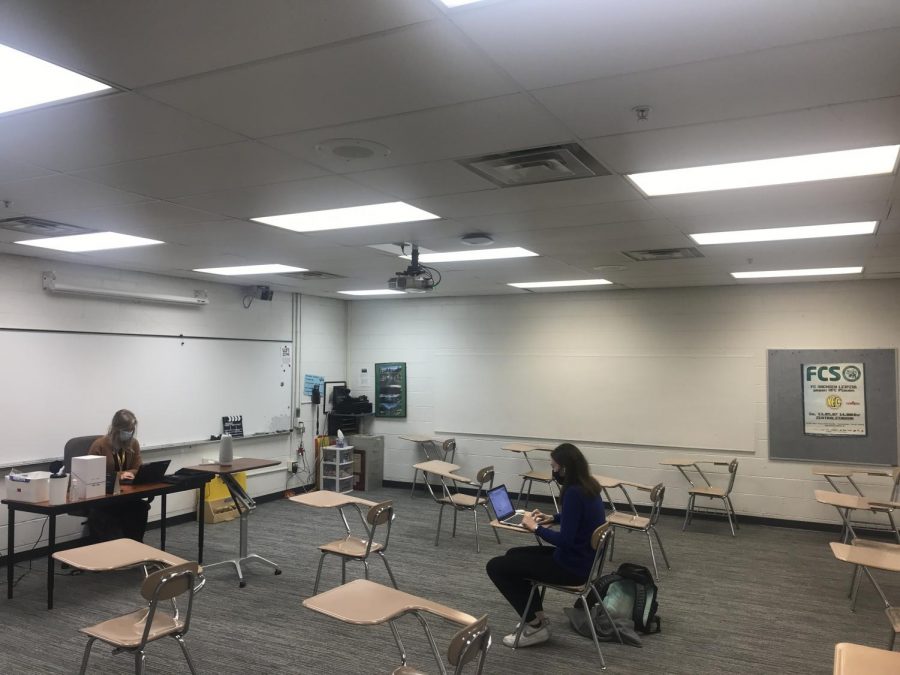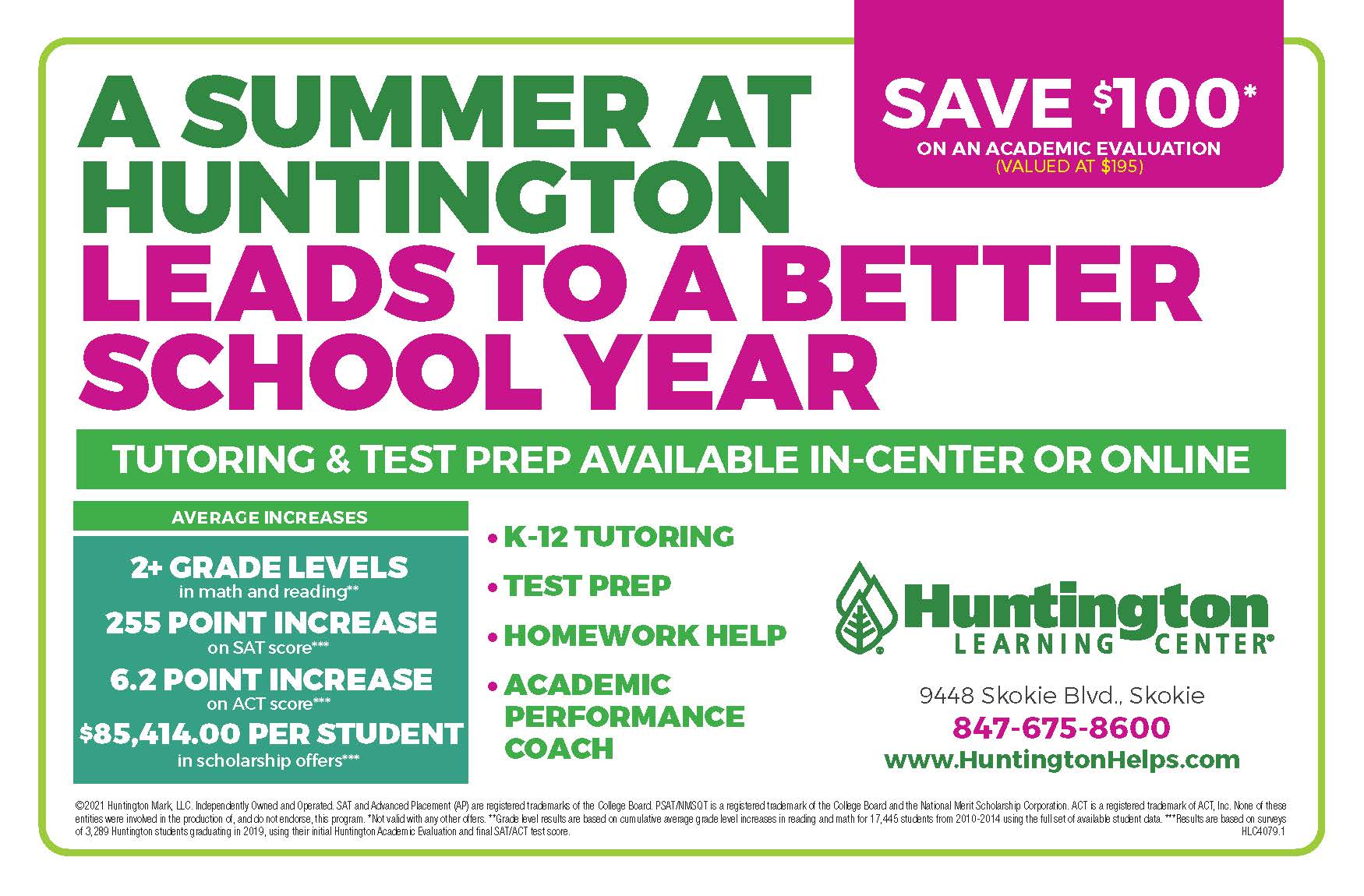South reflects on phased-in hybrid learning, prepares for full implementation
October 19, 2020
The first week of phased-in hybrid learning was cut short a day due to confirmed and probable cases of Covid-19, according to an email Superintendent Dr. Charles Johns sent to students, staff and parents on Oct. 8. Despite this setback, Johns stated that the district is continuing their plan to start the full implementation of hybrid learning on Oct. 20, which will give all students who want to return to school an opportunity to come in everyday for half a day. After the first week of hybrid learning, Principal Dr. Lauren Fagel said that about one-third of the student body chose to attend in-person classes while the administration expected the number to be around two-thirds.
With the onset of the full hybrid plan, Fagel said letting more students into the building creates some anxiety because the chances of students and staff becoming sick increases. After the abrupt shutdown of in-person learning for a day, Fagel raised a question about the feasibility of running the school when more cases occur.
“That’s the real challenge right now, how many people do you quarantine before you just say we don’t have enough staff to run school,” Fagel said. “We’re not in that place now, but you can see how quickly it escalates.”
South first welcomed students back to campus on Oct. 5, which marked the beginning of District 225’s two-week, phased-in hybrid plan. While the total number of students attending in-person class has been lower than anticipated, for the students that did come to school, the experience went well, according to Fagel.
“I think [hybrid learning] has gone really smoothly in terms of students who have chosen to go to campus like signing in, leaving campus, and getting to their classes,” Fagel said. “The kids have been great with wearing their masks and getting right to class. The instructional assistants who are in the classrooms for teachers who are home have done a really good job, especially since this is a really new thing.”
While senior Katie Durow was initially nervous about coming into school for in-person learning, she felt that GBS took the necessary precautions to make her feel safe. She explained that her temperature was taken multiple times in one day and that everyone was wearing a mask and was spread out in all of her classrooms. Overall, Durow concluded that hybrid learning was a positive and safe experience for her.
“The school made it really easy for [students] to keep distanced from each other, and I felt really safe the entire time,” Durow said. “It was just really refreshing and nice to be in a classroom with my friends and classmates instead of seeing them over the screen.”
However, the hybrid model is not a viable option for all students. Senior Michael Zhang decided to opt out of hybrid learning to limit the potential exposure of Covid-19 to his family.
Zhang believes that the hybrid model creates more challenges than benefits. He questioned the effectiveness of having teachers manage two separate learning environments at the same time and stated that the school’s plan was too ambitious for the current situation.
“ I think that they are rushing into things way too quickly in the span of two weeks,” Zhang said. “I don’t think that it is a very smart idea to have half the school back at one time since it’s still quite a lot of people.”
Laura Croak, Foods and Graphic Design teacher, agreed that managing remote and in-person learning at the same time is a challenge, but is excited to have interactions with some of her new students face-to-face. During her classes, Croak realized that teaching students through Zoom and in-person simultaneously was challenging, as she found herself struggling to keep balance between different groups of students.
“Teaching students in-person and remotely was a pretty interesting experience,” Croak said. “It went well and technology worked as it should, but I found myself focusing on one group more than the other at times. I had to remind myself that I have students in both environments that I need to be communicating with.”
Many applied arts offered at GBS, such as Foods and Woodworking, have been unable to provide the full classroom experience due to the e-learning format. Senior Delaney Blandford said that it was difficult to take an interactive class like Woodworking through Zoom because she was not able to complete as many hands-on projects. This influenced her decision to attend in-person classes, because she would be able to have a more meaningful experience.
”I definitely think it was worthwhile coming in for Woodworking because we’ve been working on different at-home projects,” Blandford said. “We did a tour of the woodshop and it was nice to actually see the woodworking equipment.”
Blandford said she felt safe when just seniors were in the building, but she has a few concerns about when the building will have more students present. Her first concern is that the underclassmen might not take the building’s safety precautions seriously. She also noticed that people were not going the correct way on the stairwell, which she said was not a major issue when only one grade level was there but could become more problematic with more students present.
Senior Lucas Nguyen decided to opt out of the hybrid system because all of his teachers, except one, are teaching from home, so he decided that coming-to school was not worth the risk. He said that coming into the building was risky while many uncertainties still exist about the coronavirus. He specifically highlighted a potential issue with the nearing flu season and the coronavirus pandemic.
“We don’t know much about coronavirus, especially going into the fall season where we know flu season will start up,” Nguyen said.”You don’t know all the variables that’s going into what the risk people will [have] going into school.”
Durow also had a concern after trying out hybrid learning. She explained that with more people in the building, the line to sign-in and take temperatures might get backed up. With this aside, she believes that South is well equipped for the full implementation of hybrid learning. Durow emphasized that the success of the hybrid plan relies on how students choose to behave.
“We shouldn’t have many problems as long as people continue to stay safe outside of school, wear masks and don’t go to large gatherings of people,” Durow said. “If people just do that it will make coming back to school so much easier. I think that the top priority right now should be returning to school safely and not necessarily anything else besides that, such as parties.”





